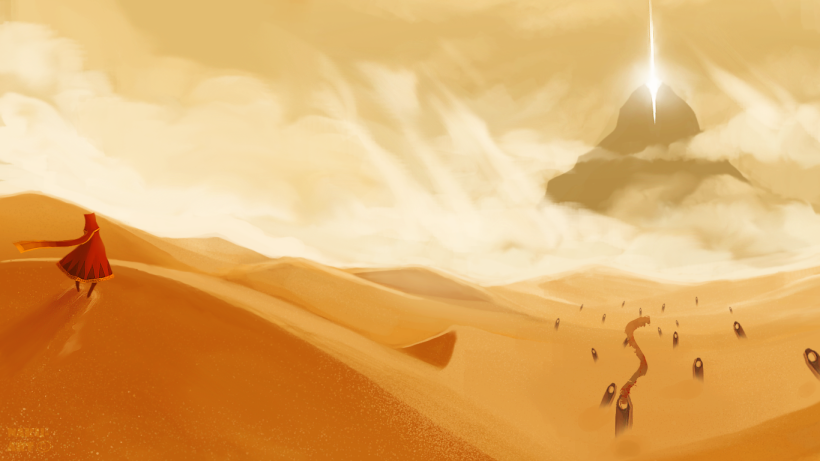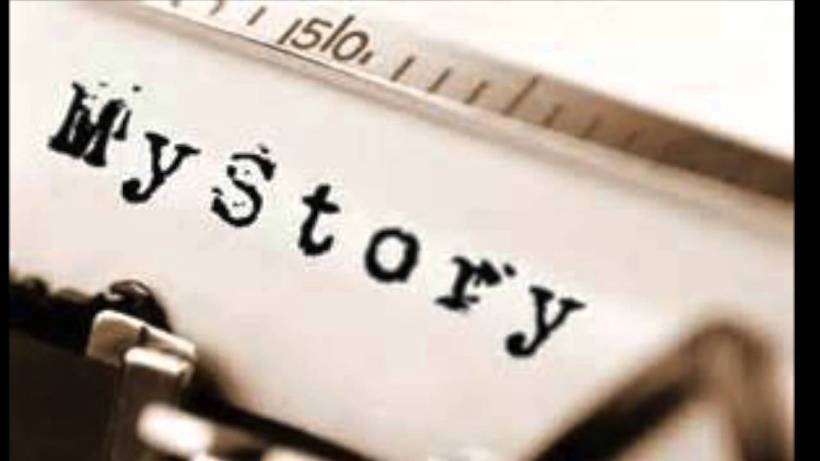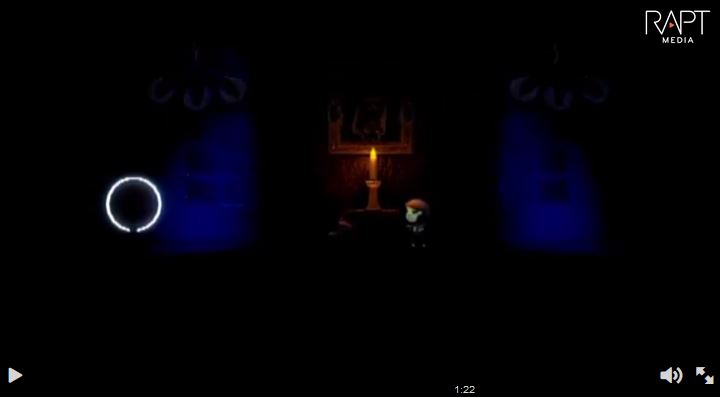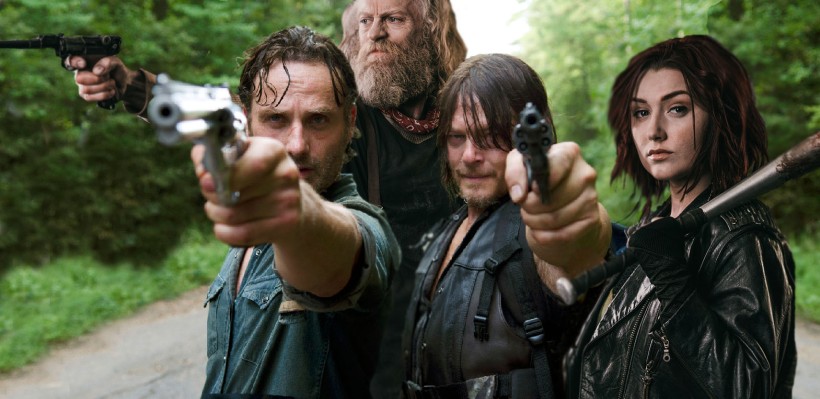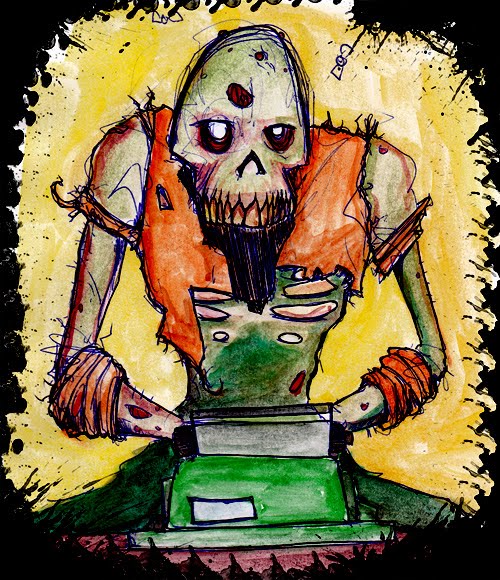Broadcasting live to anyone out there in Zombieland with a soul and a pair of ears: this may be my final reflection, but it is not my final broadcast.
Telling My Story
Telling stories is such a core aspect of our humanity. Visual, oral, and written accounts have been passed down for centuries. History is made and rewritten through the telling of stories. For some, telling stories is therapeutic and healing or provides a human connection. For others, storytelling is for entertainment and joy. And yet, for so many it is simply a chance to connect and finally be heard. For me, storytelling is about all of those things and more wrapped up in that twelve letter word. Stories have always been a huge part of my history dating back to the first time I can remember my mother reading me a bedtime story. It was a nightly ritual in my household for her to lull me to sleep with Golden Book stories, Mother Goose Nursery Rhymes, and later full-length novels. I loved every book and story that unraveled at each turn of the page. These stories were my entertainment, the keystone to developing my vast imagination, and the connection that made me and my mother very close.
As a teenager, both reading and writing stories became my home away from home. Growing up poor there were few opportunities to explore beyond the boundaries of my rural, Pennsylvania hometown. Stories gave me the chance to be someone else and travel to real and fictional places of all types. Later, telling my story of trial and triumph growing up with a lot of odds against me helped to shape my future. Scholarship applications always wanted to know my background, my interests, and my aspirations, and I was happy to oblige. Before too long I had written myself into enough scholarships to pay my way into an out of state school for four years – a dream that would never have come true without the scholarships. Finally, I was able to live out some of my fantasies as a kid about traveling to far off places, and it was all thanks to the story writing abilities that I had honed as a kid.
Hard times would later hit me in my college years, and I traveled to a dark place in my mind for a few years. Talking about my feelings was never easy, and living so far from home and the only people I felt comfortable talking to forced me to keep a tight lid on all of the stress I was experiencing. Sometime throughout all of the darkness I stumbled upon a little bit of light when a professor of mine suggested I start keeping a journal again. At this point in my life, my storytelling style became more autobiographical. I wrote, rewrote, reflected, and analyzed my writing as a way of getting out my feelings. It was my therapy. To this day, my journal is the only one that knows the specifics of my dark days, and telling my story was the only thing that gave me hope and healing.
Finally, fast forward to my digital storytelling class in graduate school. My passion for writing became a form of entertainment and joy again in my exploration of my focal theme of zombies. I expected to have fun writing about post-apocalyptic stories, but I didn’t expect to have the opportunity to learn so much about the deeper reasons for why telling these and other stories were so important to me. In my readings and writings I discovered the psychological importance of sharing personal stories. Brain anatomy and human connection make this process intensely important. Human development and learning is closely supported by the use of storytelling. This research helped me to understand my constant drive for needing to share my tales, and, though this class is coming to a close, I believe that my journey through storytelling is far from over.
Below is my final portfolio for Learning with Digital Storytelling. Check out the question mark for how to navigate the ThingLinK.
Zurvive the Night
The time has finally come for me to produce, finesse, and publish my own zombie digital story – starring me, of course!…Well, it’s kind of me…if I were a computer animated sack doll. As I have become fascinated with the world of interactive stories lately, I decided to make my own “choose your adventure” story in the zombie genre. This story was created with the use of a PS3, video game creation tools found in the game Little Big Planet, a DVR, Windows Movie Maker, and Rapt Media Productions. Please enjoy and good luck in Zurviving the Night!
Dead Lonely
Love is the greatest power in the universe. Within those four simple letters lies a language that transcends barriers of spoken words, a machine that can combat hatred, and a promise of eternal goodness and kindness. Love is within all of us and is a universal symbol of peace and happiness. We all have the capacity for love, and we give it out in varying degrees of magnitude to our friends, family, significant others, coworkers, acquaintances, and, sometimes, perfect strangers. Some loves last for the moment, others last for a lifetime, and still some loves last past “til death do we part.” Dead Lonely is one such story that details a love that crosses the border between life and death.
Fred is lonely. He’s also dead. But what sets him apart from other zombies is his undying love for his girl, Barbara. Before the apocalypse, Fred was head-over-heels for Barbara. Now, as a zombie, he spends his days wandering the world in search of his long-lost love. Like many other zombie stories I’ve reviewed in this blog, Dead Lonely is a “choose your own adventure” tale. However, what makes this one unique is the presentation. Brought together by Rapt Media and Aardman (the creators behind Wallace & Gromit and Shawn the Sheep), Dead Lonely presents us with a fully interactive, animated story of romance. That’s right! This digital story manages to bring the apocalypse to the two-dimensional world of animation where you will help Fred to find his one true love, Barbara.
| Trait | Description | Critique |
| Project planning | Is there evidence of solid planning, in the form of story maps, scripts, storyboards, etc.? | This is the first time that I can provide an answer to this assessment trait with actual evidence from the production. After sifting the edges of Google for a new and unique zombie digital story, I not only ran into the story but also a behind-the-scenes video for it, too. The video listed at the bottom of the link is also interactive, allowing the viewer to explore the different modes of creation the production went through. The coolest part about getting to experience the behind the scenes footage is that you do not have to view it in order; the viewer gets to decide what they are interested in and click through those portions of the movie, which uses the same interactivity as the original short film. Since the film is non-linear due to the ability for the viewer to make choices, the storyboard planning was dense and thorough while still allowing an open concept. The story itself was also well researched to bring a new twist to the zombie genre while also successfully bringing in classic references from pop culture. 10/10 |
| Content understanding | How well did the student meet the academic goals of the assignment and convey an understanding of the material addressed? | A lot of zombie productions are remixes on former apocalyptic tales, but Dead Lonely is one of the few to bring a new story forth while only hinting at the origins of the zombie genre. Many classic references can be seen in this production such as zombies congregating at a mall, the use of black and white to showcase the early days of the genre, and the use of slow, shambling zombies. At the same time, we get a taste for a more unique storyline amidst all of the references. Not once do we see a living human in this production, only zombies. We only get the zombie perspective on what the end of the world would look like. In all of this, we see this video conveying a solid understanding of the material addressed in the story. 10/10 |
| Originality, voice, creativity | How creative was the production? Did the student exhibit an original sense of voice and a fresh perspective? | Never have I seen a zombie story about two zombies who love one another just as much in death as they did in life. Even more-so, I have never seen a story of this type be pulled off via animation. The story of love and zombies are two which are told often, but rarely are they told together as they are in this unique tale. This story also gives us a fresh perspective on choice, as we the viewer are invited to help guide Fred by making choices on his behalf in the video. I have looked at many stories recently that give choice to the humans in a zombie film, but this one forces us to see and make choices through the eyes of an undead corpse. 10/10 |
As the Bee Gees once asked, “How deep is your love?” This tale of true love shows us that love really can transcend any barriers we may throw its way. The depth of Fred and Barbara’s love is a captivating plot point that helps to draw in even the most hardened of hearts. And, if for some reason their love is not an inspiring enough reason to continue through this story, the interactivity will draw you in as you find yourself a part of their eternal love story.
Scream Team
Who do I trust to be on my side when all hell breaks loose? Realistically, most of my friends and family will be lost to the chaos and those that survive will be ill-equipped to deal with the harsh rules of the new world order. So my dream team consists of four of the most resourceful, rugged, and and intrepid warriors of the apocalypse: Rick Grimes (The Walking Dead), Daryl Dixon (The Walking Dead), Doc (Z Nation), and Addy (Z Nation).
Special Features:
Why?: This Daily Create from the DS106 Twitter feed is callled “Build your dream team.” The idea was to create a poster that includes people that I would want to work with for any reason, and I instantly thought about who I would want on my zombie slaying team.
How?: This image was created using three separate images and Photoshop to mesh them all together. The background of one of the images was kept in tact and the rest erased. I then used a variety of tools to blend, shadow, create a uniform color tone, and blur parts of the image to make it flow together.
The Hero We Didn’t Want But Desperately Need
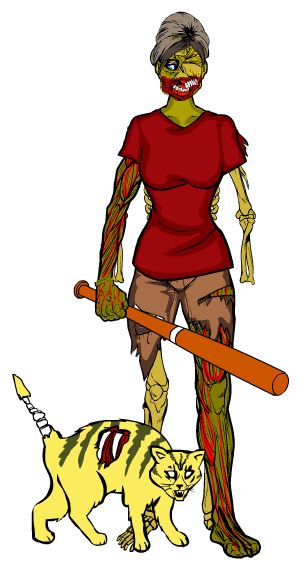
When the end times are near and humanity turns against itself for the sake of survival, one woman and her crazy, undead cat will be the difference between becoming zombie bait and staying alive. Zombie Zina is like none other in this bleak apocalypse; half zombie, half human she has retained her conscious in the body of a rotting corpse. Within her bitterness at this unfair life, she seeks justice by eliminating the undead scourge from the world and rescuing those who find themselves in peril.
Special Features:
Why?: This week’s daily create comes to you from the DS106 assignment, “The World Needs More Heroes.” The original assignment was to create a hero using Marvel’s hero creator, but after searching through their database of body parts I could not find a single thing to create an undead anti-hero. I was inspired to find a new way of creating the hero I desired and set out to see if there was another simulator I could use instead.
How?: This hero was created by using the HeroMachine – Zombie Edition. All of the features were taken directly from this simulator and colored within the simulator.
#tdc1759
Paradise Lost
Backwards, forwards; rewind, play. No matter which direction you view this story, your heart will be aching from the axe wounds it will leave in your heart. An impressive feat from a mere video game trailer. While Dead Island the game isn’t explicitly about storytelling, the game trailers always find a way to tell a tale that brings back the human element to the zombie genre. In this episode, we find ourselves in the middle of a vacation gone sour; a mother, father, and daughter wanting to get away from everyday life find themselves trying to get away from the zombies that are dying to ruin their family vacation.
| Trait | Description | Critique |
| Originality, voice, creativity | How creative was the production? Did the student exhibit an original sense of voice and a fresh perspective? | This production was quite creative in its presentation of the information. It is rare that a story starts at the end and ends at the middle, but this story does executes this twisting of plot seamlessly. It also serves to increase the effectiveness of the story as we are no longer concerned about if the little girl and her family survived, but rather why they didn’t survive. This forces the audience to feel empathetic to the situation instead of fearful of it – a change of pace for a zombie tale. The story is also original in that we rarely see the apocalypse happen to someone while on vacation. 10/10 |
| Project planning | Is there evidence of solid planning, in the form of story maps, scripts, storyboards, etc.? | This story was created to be viewed backwards and forwards at the same time. The flashbacks and flash forwards work together well to explain the chaos, loss, and anxiety of the situation this family finds themselves in. Solid planning has to have occurred in order to match the details of each scene to show their connectedness yet not be repetitive in the information being shared. The melancholy background music matches and enhances the tone of the story very well. The brief cutaways from music also help to enhance the sounds of terror elicited by the little girl as she attempts and fails to escape the nightmarish creatures. 10/10 |
| Content understanding | How well did the student meet the academic goals of the assignment and convey an understanding of the material addressed? | In terms of meeting the academic goals of a zombie story, this production hits on the major highlights of survival, death, anxiety, sadness, and a plethora of other emotions associated with the end of the world. However, this story does not add many new elements to the typical plots of most zombie productions. This story finds a creative way to spin the same old zombie tale of fighting to live and failing, but it is nonetheless still the same old zombie story. 5/10 |
Backwards, forwards, and everything in between this story finds a unique place in the hall of zombie stories. Never have I seen a story told out of order yet make so much sense emotionally for its mixed up plot. I dare you to not feel hope as you see the story reverse upon itself and end in a place where there is a possibility for something to go differently. I dare you to not feel sadness as you reach the end and realize that what we’ve already seen is about to happen again.
Eating Brains: Feeding the Writing Hunger
As I draw nearer to the creation of my own digital story, I find myself drawing inspiration from some of the well-known and the lesser-known authors of the horror genre. I have been “picking their brains” for tips, tricks, ideas, and words of wisdom for how to get started writing successfully about the undead. I have read excerpts from Stephen King’s On Writing, consulted Jim Butcher in person at a meet-and-greet in my town, and read a variety of blogs from a plethora of authors. One that stuck out to me recently was a post by author Craig DiLouie from his blog post titled, “Writing The Zombie Novel: Lessons on Craft.” In his post, Craig details ten different tips on how to write survival horror that people actually want to read. Reading through these ten tips, I couldn’t help but think about how his advice was the embodiment of the work we’ve been learning and doing in class. They also epitomize the ideas of good story telling.
Tip #1, “Read Everything,” and Tip #2, “Always Be Writing,” are the exact rules that were set by Lori on day one. Every week we sit down to read/watch something story related and every week we sit down to write our own thoughts, critiques, and personal creations. As time has gone on, repeating these two acts has helped me to become a better writer, reviewer, and storyteller. I remember a while back that a fellow student questioned the validity of only reviewing stories and not writing them; wondering what the purpose behind these writings was all about; implying a desire for wanting to be more of a creator than a reviewer. I believe that Craig’s first two tips very clearly underline the purpose behind our work in our blogs. Right now, writing about others’ work and reviewing it critically on a consistent basis is getting us to practice in reading everything and practicing to always be writing. Repetition in this way is preparing us to produce more interesting stories full of depth and development. Not only that, but it is exposing us to numerous examples of what works and what doesn’t, thereby providing us with enough fodder to remix a story that is unique and creative to our own styles while respecting the styles of those who came before us.
Continuing through the tip list, tips #5 through #7 invite conversation around Jason Ohler’s traits for assessing storytelling. Respecting the needs of the audience is an important part of a successful tale. Doing your homework (#7), responding to your audience’s ability to suspend belief (#5), and writing a story about people, not zombies (#6) are all geared toward respecting the target audience of a survival horror production. Audience buy-in is probably one of the most important factors in a story’s success, and this can be accomplished through reader empathy. My good friends Lisa Fish and Nick Grimes feature empathy in their blogs frequently as a tool for good storytelling due to its ability to unite people of different backgrounds and beliefs. Craig also addresses it in his blog by stating, “Readers need somebody to empathize with in the story; in a sense, characters stand in for the reader. As terrible things happen to these people, the reader feels like these things are happening to him or her. But if the reader has nobody to care about, they will not empathize.” This is something that I am going to be playing very close attention to as I start to develop my own story.
Tip #10 may very well have been written by Lori herself stating, “be prepared to promote your work.” Since the beginning of this course, we have been asked to promote ourselves via blogging, Twitter, and a variety of other social networking tools. Seeing this written out by Craig got me thinking if what I am doing now is enough to get my story out there and, if not, what I should be doing to publish myself in as many places as possible. The more that I write in this blog, the more important it has become for me to have viewers reading what I am writing. In our latest Gallery Walk, I finally realized just how important my blog posts have been to my peers and how I can have an impact on a larger audience. I am determined to make my own digital story shine better than any blog post I’ve created to date and find new ways to gain attention from others outside of our class to promote myself and my work.
@CraigDiLouie, @StephenKing, #INTE5340, #DS106,
The First Wave
What happens to the soul when a human being dies? Moreover, what happens to the soul when a human being becomes one of the walking dead? Both of these questions invite sensitive conversations usually involving religion, science, or philosophy. Yet, despite decades of talk, both of these questions remain to have a definitive answer; some people believe one thing while others believe another, and still others have no beliefs at all. Because of this, filmmakers and writers that dwell in the zombie genre have used these questions to fuel their work and provide an even more controversial look into the soul and its destination once the body stops classifying as alive.The First Wave does just that. In an attempt not to give too much away, I will leave you with one final thought before viewing my critique below: what would it feel like if the soul really did stick around despite the status of the body?
| Title | Description | Critique |
| Story | How well did the story work? This trait can address structure, engagement, character transformation or any of the other qualities of story discussed in Part II. In fact, an entire rubric can be devoted to evaluating the quality | The character building in this story proves vital to the other story elements present in this short film. The confusion and mystery surrounding her story arc and the small reveals in detail are important in helping to understand her struggle in this post apocalyptic world; helping the viewer to recognize the same internal conflict she feels. These details are also effectively spaced out to give the audience a sense of being a detective – allowing the viewers to piece together the information to discover that Allison is a human filled with pain and regrets after being brought back from being a zombie. Finally, the idea that her soul had been with her throughout the process of zombification and then throughout her rehabilitation process provide a unique spin on the more traditional zombie stories that choose to only focus on survival. 10/10 |
| Content understanding | How well did the student meet the academic goals of the assignment and convey an understanding of the material addressed? | Where other zombie movies tend to feature the issues of soul as a side note in their feature films, The First Wave tackles it as the main driving force for the plot. The idea that people can come back from being a zombie and the complications of it thereof are so eloquently addressed in the overall tone, the non-verbal cues of the lead character, the mystery of the plot, and the intensity of the reveal. The creators understand the controversy behind such a thought and tease the audience with small details throughout that build to the final crescendo of the performance that brings it all together. 10/10 |
| Flow, organization and pacing | Was the story well organized? Did it flow well, moving from part to part without bumps or disorientation, as described in Part III? | The story had a very purposeful flow which allowed the final reveal to be so impactful on the viewer. The mystery surrounding the story and the questions it raised from flash back to flash back helped to build understanding for the follow-up scenes. Some disorientation could have been caused with the faintness of the radio announcer as mishearing this information can cause the viewer to have to really question the final scene in order to really understand why we’ve been focused on Allison and her torment for so long. 9/10 |
By far, this is one of the most unique zombie stories that I have had the pleasure of viewing. As I have been more exposed to digital stories in the zombie genre, I am starting to realize that some of the best stories are not full feature length movies. A lot of the stories I’ve viewed are far shorter, and I feel that this really forces the people behind these tales to be more selective with their creativity. There is little room for filler so the details and plot choices that are included are vital elements to the story. The shortness also forces some details to be left out, and, in deciding what to omit, the makers help guide the audience to be participants in the story – filling in the gaps for themselves with the clues that have been included. The soul of this story resides in these elements, just as the soul of Allison still resides within her in her next chapter of life.
Holding Out Against the Zombie Apocalypse?
Look no further than Machu Picchu! Who wouldn’t want to live in one of the most beautiful places on Earth while the rest of the world goes to hell? If that’s not enough to convince you, check out the reasons by 99Covers.com below for sticking out the apocalypse in this secluded, resource-filled region. If you’re still not convinced, check out the streetview tour of Machu Picchu itself. Your breath will be taken away…but be careful, stop breathing too long and you may join the undead ranks.

Special Features:
Why?: This week’s daily create is brought to you by DS106’s assignment “Streetview an interesting spot.” I chose Machu Picchu, because during my undergrad years, I studied it heavily in my art history classes. I loved the location so much that I put it on my list of places to see in my lifetime. It also was also mentioned in one of my favorite zombie novels recently as one of the best places to survive in the event of a zombie apocalypse, so I felt it was fitting for many different reasons.
How?: This post is a compilation of screenshots that I took from Google Streetview and 99Covers.com.
